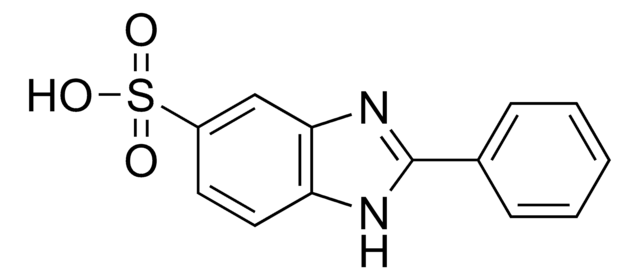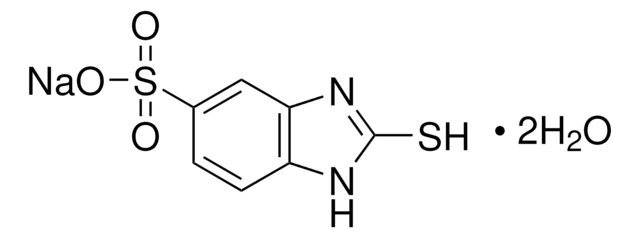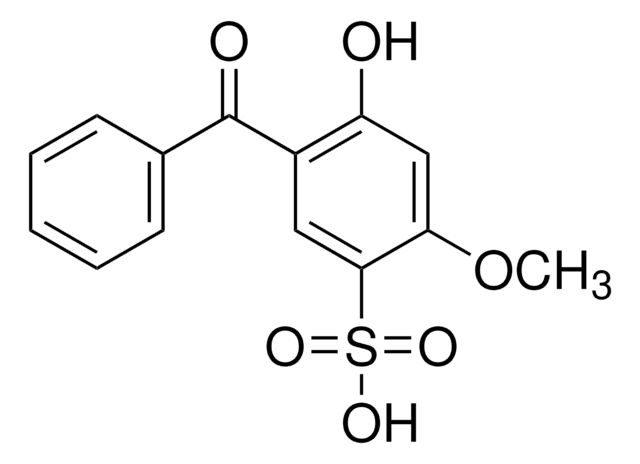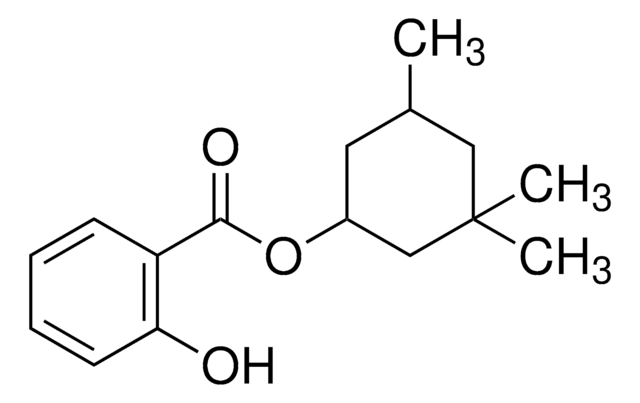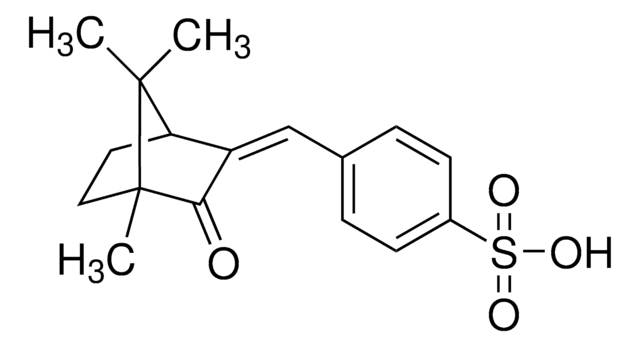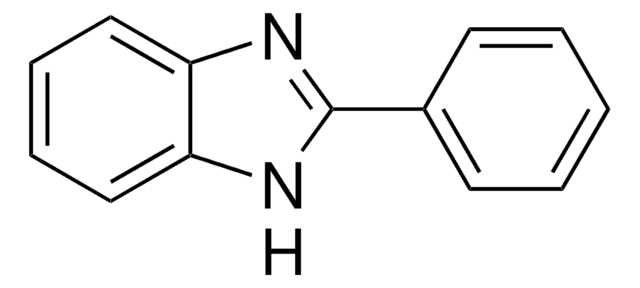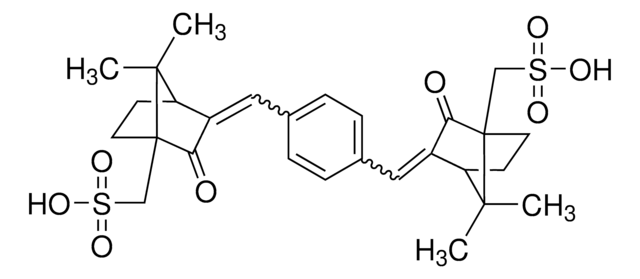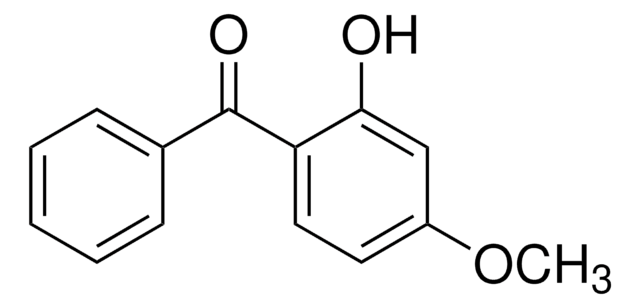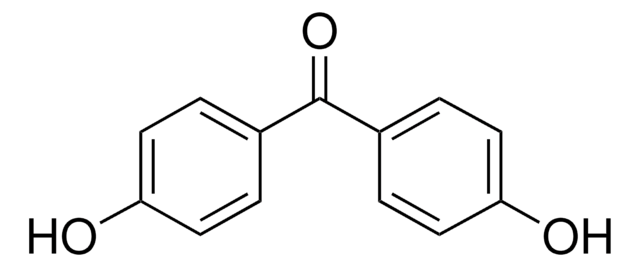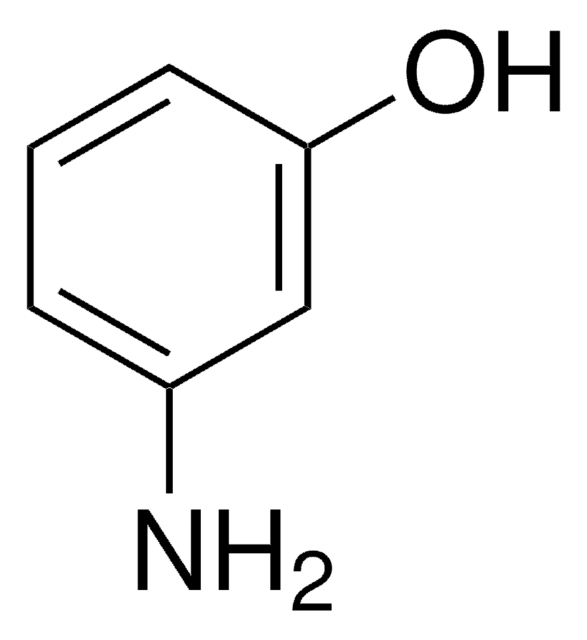437166
2-Phenyl-5-benzimidazolesulfonic acid
96%
Synonym(s):
Ensulizole
Sign Into View Organizational & Contract Pricing
All Photos(3)
About This Item
Empirical Formula (Hill Notation):
C13H10N2O3S
CAS Number:
Molecular Weight:
274.30
MDL number:
UNSPSC Code:
12352100
PubChem Substance ID:
NACRES:
NA.22
Recommended Products
Quality Level
assay
96%
mp
>300 °C (lit.)
solubility
ethanol and water: soluble (as sodium salt)
functional group
phenyl
sulfonic acid
SMILES string
OS(=O)(=O)c1ccc2[nH]c(nc2c1)-c3ccccc3
InChI
1S/C13H10N2O3S/c16-19(17,18)10-6-7-11-12(8-10)15-13(14-11)9-4-2-1-3-5-9/h1-8H,(H,14,15)(H,16,17,18)
InChI key
UVCJGUGAGLDPAA-UHFFFAOYSA-N
Looking for similar products? Visit Product Comparison Guide
Related Categories
General description
2-Phenyl-5-benzimidazolesulfonic acid has been reported as UV filter. It is a xenobiotic compound detected in in gray water from houses and effluents of the biological treatment systems (aerobic, anaerobic, and combined anaerobic+aerobic). It is a micropollutant of personal care products and its removal from aerobically treated grey water by ozonation and adsorption onto activated carbon has been reported.
Application
2-Phenyl-5-benzimidazolesulfonic acid was used for the fabrication of biomimetic sensor for determination of 4-methylbenzylidene camphor (4-MBC), an ultraviolet (UV) radiation protector.
UV absorber
Storage Class
11 - Combustible Solids
wgk_germany
WGK 1
flash_point_f
Not applicable
flash_point_c
Not applicable
Choose from one of the most recent versions:
Already Own This Product?
Find documentation for the products that you have recently purchased in the Document Library.
Customers Also Viewed
Lucía Hernández Leal et al.
Environmental science & technology, 44(17), 6835-6842 (2010-08-05)
Eighteen selected xenobiotics related to personal care and household chemicals (UV-filters, fragrances, preservatives, biocides, surfactants) were measured in gray water from 32 houses and in effluents of three different biological treatment systems (aerobic, anaerobic, and combined anaerobic+aerobic). All selected xenobiotics
Application of a biomimetic sensor based on iron phthalocyanine chloride: 4-methylbenzylidene-camphor detection.
Boni AC, et al.
Journal of the Brazilian Chemical Society, 21(7), 1377-1383 (2010)
L Hernández-Leal et al.
Water research, 45(9), 2887-2896 (2011-04-02)
Ozonation and adsorption onto activated carbon were tested for the removal micropollutants of personal care products from aerobically treated grey water. MilliQ water spiked with micropollutants (100-1600 μgL(-1)) was ozonated at a dosing rate of 1.22. In 45 min, this
Ashley R Heurung et al.
Dermatitis : contact, atopic, occupational, drug, 25(6), 289-326 (2014-11-11)
Sunscreen is a key component in the preventive measures recommended by dermatologists and public health campaigns aimed at reducing sunburn, early skin aging, and skin cancer. To maximize compliance, adverse reactions to sunscreens should be minimized. Although inactive ingredients cause
Murilo L Bello et al.
PloS one, 10(3), e0121110-e0121110 (2015-03-25)
Layered drug delivery carriers are current targets of nanotechnology studies since they are able to accommodate pharmacologically active substances and are effective at modulating drug release. Sodium montmorillonite (Na-MMT) is a clay that has suitable properties for developing new pharmaceutical
Our team of scientists has experience in all areas of research including Life Science, Material Science, Chemical Synthesis, Chromatography, Analytical and many others.
Contact Technical Service